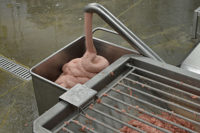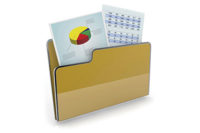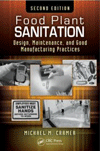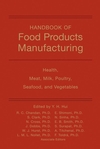In 1936, Roger Wood co-founded a meatpacking company in Savannah, Ga., called Wood-Robbins Sausage, which turned into Roger Wood Foods (www.rogerwoodfoods.com) under his sole ownership, after World War II. Still a family-owned business today, the processor produces more than a half-million pounds a week of smoked sausage and other smoked meats that are distributed across eight southern states through foodservice as well as national and regional grocery chains. The SQF Level 2000-certified company employs about 200 people at its 100,000-square-foot facility.
Catch-weight management
In 2012, Roger Wood Foods decided to switch to enterprise resource planning (ERP) software that could handle the unique requirements of food products that vary in weight and size. These “catch weights” — as inputs and outputs — add a layer of complexity to traceability. The way to simplify catch-weight management is through the use of bar-code scanning wherever varying weight products are touched — be that final product shipping to customers, consumption of raw meat or tracking meat byproducts that are used in other food processes, internally at your operations or sold to other companies.
The meat processor required a scalable, stable solution with the following features:
The ability to record weights at time of purchase or to offload that process until the product is shipped.
Visibility of the catch weight on the item tracking page wherever item tracking is available in the system (e.g. all inventory transactions).
When receiving catch-weight items into inventory, the cost that hits the inventory is based on the actual catch weight of the case for purchased, as well as manufactured products.
If distributing item charges (e.g. freight, duty, etc.) to catch-weight items, it can be done by the actual catch weight in order to get a more accurate cost distribution.
Roger Wood Foods went with JustFoodERP software, which includes these features as well as a range of other food industry-specific functions, built on the powerful platform of Microsoft technologies.
Containerization
Adger Ross, director of IT at Roger Wood Foods, says the containerization functionality within JustFoodERP was another key consideration in software selection. Containerization allows for picking of a container full of 50 or 60 cases without having to scan individual cases, which matters a great deal with catch weights, since every case is a different weigh. What is also known as “single scan inventory management” or “license plate scanning” solves this problem for the protein processor.
Warehouse management
The ERP system at Roger Wood Foods includes mobile warehousing functionality.
“Warehousing is one of the biggest changes from our old software system,” Ross says. Several warehouse managers are now using a wireless warehouse-management system (WMS) interface that extends the ERP system onto the floor via bar-code scanner guns. Half a dozen pickers in the Roger Wood Foods warehouse receive output from production, shipping, pallets, cleanup and more, all at the same time, which improves speed, accuracy and productivity on the floor.
More on the floor
Roger Wood Foods is next looking at adopting a robust, standalone application, JustFoodERP Plant, which communicates with the ERP system and brings shop-floor functionality to the desktop or any Windows device using a touch-friendly light interface. A rugged, washdown computer set up at the front or end of a production line, for example, allows for real-time recording of production output and consumption activities and on-the-spot metrics such as expected versus actual components.
Visit www.foodprocessingsoftware.com for more information.








